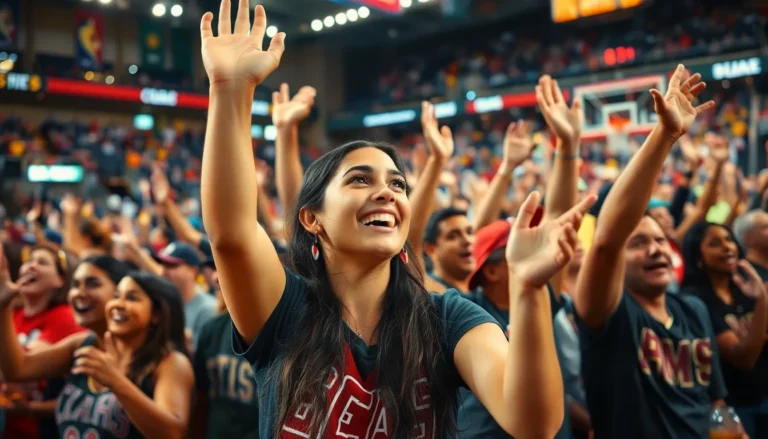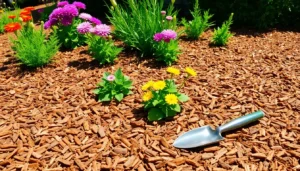In a world where artificial intelligence is evolving faster than a cat meme goes viral, the question arises: can ChatGPT whip up images like it does words? Picture this: a chatbot that not only crafts witty responses but also dabbles in the art of visual creation. Sounds like a digital Picasso, right?
Table of Contents
ToggleCan ChatGPT Do Images?
ChatGPT focuses on text generation and lacks inherent image creation capabilities. OpenAI developed it primarily for language processing tasks. However, it can interact with other models that produce images, like DALL-E. Users can describe concepts or scenes, and DALL-E generates corresponding visuals.
Collaborative efforts between ChatGPT and image-generating models enhance creative potential. For example, a user can request a description, then use that text to generate an image with DALL-E. This synergy showcases the power of combining different AI models.
Communication through text lets users refine ideas before creating images. By providing detailed descriptions, individuals can influence the image output significantly. AI-generated images focus on accuracy based on textual input, so context plays a crucial role.
Limitations do exist with the integration. Responses may vary, and the quality of generated images depends on the prompts. Additionally, DALL-E’s capabilities differ from ChatGPT’s, emphasizing one’s strength in narrative and the other in visual art.
OpenAI regularly updates both models, aiming for improved user experiences and capabilities. Continuous advancements in AI ultimately expand creative horizons. As technology evolves, future iterations may incorporate more direct image-generation features within ChatGPT.
Understanding ChatGPT’s Capabilities

ChatGPT excels in text generation while primarily focusing on natural language processing. This model engages users with coherent, informative responses, enabling it to generate a wide range of textual content.
Text-Based Processing
Text-based processing forms the core strength of ChatGPT. Each user prompt receives a thoughtful and structured text response. Narratives, explanations, and creative writing showcase the model’s ability to understand context and respond accordingly. Users leverage this feature for brainstorming ideas, drafting articles, and conducting conversations. Efficiency in handling various topics enhances overall user experience, as ChatGPT remains readily adaptable.
Limitations in Image Generation
Limitations exist regarding ChatGPT’s image generation capabilities. The AI does not create images directly; instead, it connects with image-generating models like DALL-E. Quality varies based on user prompts, reflecting both clarity and creativity in provided descriptions. While collaboration enhances artistic expression, the resulting visuals depend heavily on the input detail. Disparities between ChatGPT’s strengths in narrative versus DALL-E’s expertise in art create boundaries in functionality. OpenAI continues refining both models, aiming for better integration of capabilities in future iterations.
Current AI Technology Landscape
The landscape of AI technology is continually evolving, particularly in the realm of image generation. While ChatGPT excels in text generation, it collaborates with other models to bridge the gap between text and visual art.
Other Image-Generating Models
DALL-E serves as a prime example of an image-generating model. It creates high-quality visuals from descriptive text, showcasing its ability to interpret user prompts effectively. Midjourney and Stable Diffusion are additional models making significant strides in this area. These tools emphasize user creativity, allowing for nuanced artistic expression. The diversity among these models reflects the innovative approaches taken in AI development.
Comparison with ChatGPT
ChatGPT and visual models differ significantly in capability. It focuses on generating coherent narratives, while DALL-E and similar models excel in producing imagery. Users benefit from this synergy, as descriptive prompts provided to ChatGPT enhance the effectiveness of image generation. Collaboration between text-based and image-based AI tools fosters a richer creative process. Understanding the unique strengths of each model guides users in achieving their artistic goals.
Potential Future Developments
Ongoing advancements in AI could redefine how users create images. Current models continue to evolve, showcasing improved algorithms and capabilities. Innovations might include enhanced image resolution and greater fidelity to user prompts. These developments aim to bridge gaps between text and visual content.
Advancements in AI
AI technology rapidly progresses, with notable improvements in visual creativity. Modern models exhibit increased understanding of user intent, resulting in better output alignment. Code refinement allows AI systems to interpret nuanced language better. Emerging trends may see AI mastering context, preserving artistic integrity while generating images. Enhanced training datasets contribute to this growth, enabling more complex image generation processes. Users can expect tools that facilitate seamless transitions between text prompts and image outputs.
Integration with Image Generation
Integration between text-based and image generation models can create a more cohesive creative experience. Future iterations of ChatGPT might incorporate features enabling users to generate visuals directly through conversational prompts. This melding of capabilities encourages artists to explore new dimensions in their creative expression. Enhanced collaboration among AI models will promote efficiency, making artistic experimentation more accessible. As technology advances, users could enjoy a more intuitive experience, streamlining the path from ideas to finished visuals.
The collaboration between ChatGPT and image generation models like DALL-E showcases the potential of AI in enhancing creativity. While ChatGPT excels in generating text, it acts as a facilitator for visual creation rather than a direct image creator. This partnership allows users to develop their ideas through narrative before translating them into visuals.
As AI technology continues to evolve, the future may bring more integrated features, enabling users to generate images directly through text prompts. This progression not only enhances artistic expression but also makes the creative process more intuitive. With ongoing advancements, artists and creators can look forward to a more seamless blend of text and imagery in their work.







